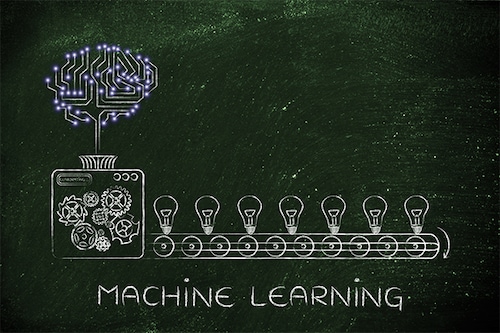RPA fast forward - Procedural Automation to Intelligent Automation
Organisations that can use technologies to amplify human potential will take bigger strides in their journey


In a previous blog, earlier this year, one of us had talked about technologies coalescing alongside automation in the near future. The merger was expected to take place over a year. But we have seen progress in months. Business process automation is growing at an unprecedented pace and is joining forces with many other fast growing areas such as analytics and Artificial Intelligence (AI) to significantly evolve from procedural automation to intelligent automation. Robotic Process Automation (RPA) has gained a lot of traction and it is no longer an alien concept. In fact, robotic process automation is a fast growing offering in the IT & BPO space and is set to become one of the largest markets in the next decade. Various research agencies have valued the IT robotic automation market at approximately $5 billion by 2020. RPA Solutions are maturing - Conducive ecosystem is key• Advancements in hardware and storage: With the advent of technological advances in the semi-conductor space, we are currently in an era where computing power and data storage is relatively inexpensive. The availability of high-end computing infrastructure and efficient algorithms to rapidly churn out enormous volumes of data has ignited the surge in the development of new AI applications. • Increased investments in AI-linked startups: Venture capitalists, corporate companies and crowdsourcing companies are ready to back AI ideas, ensuring that AI enthusiasts and startups have easy access to capital. Leading organisations have also invested in this technology for example Open AI, which is a non-profit Artificial Intelligence research organisation, is funded to roughly $1 billion by companies like Infosys and Amazon. New areas to watch out for in automationAs organisations go through the journey of implementing RPA across processes, it is also time to think about a plan for the future course of action. AI techniques, using machine learning, natural language processing (NLP), voice and image recognition have led to possibilities for automation beyond rule-based processes. Processes that required a high level of human interaction could now be transformed to achieve unprecedented levels of efficiency and accuracy. Here is a list of the automation techniques that will help organisations move from basic procedural automation to advanced intelligent automationSelf-learning and self-healing solutions: These solutions will have data and machine learning aspects at their core. Based on the patterns identified, algorithms tend to understand, learn and take necessary actions without any human intervention. The application can range from a simple invoice processing solution to complex contracts and legal document processing, where data extraction is required from multiple document sources. Language processing solutions: These solutions will understand the context of text/speech and take appropriate action, which will come close to human responses like providing resolutions to a query raised via chat, phone, email or any other interactive modes. These solutions will rely on a combination of translation, machine learning and neuro-linguistic programming techniques to interpret the context of automation. Predictive analytics to drive automation: Organisations are swamped with data from multiple sources. Power of analytics could be combined with the capabilities of automation. Predictive analytics solutions could be used to envisage an outcome and necessary actions can be taken automatically. Knowledge-driven automation: One of the challenges that all organisations face is their ability to capture knowledge that is present in the workforce and apply it in day-to-day operations. An efficient organisation can gain, if this knowledge can be captured and re-used, thus further optimising the automation processes and its outcomes. As part of this journey, there should be a mechanism to capture both structured and unstructured knowledge. Further, this knowledge can be organised and applied to analytics to drive decision-making, data insights and further automation. As all these concepts and solutions make inroads into operations, we are definitely in for some exciting times ahead of us. Organisations that can use these technologies to amplify human potential will take bigger strides in their journey of automation, resulting in easier, technologically impactful, business-oriented processes. - By Santosh Unni, Senior Director – Technology and Automation Practice, Infosys BPO, With inputs from Sudhir Medithi - Senior Associate Consultant, Infosys BPO.
First Published: Oct 24, 2016, 09:51
Subscribe Now